Leave No Trace
May 28, 2020
Meadow at Green Hills Preserve.
by Kirsten Werner, senior director of communications.
Natural Lands is unique among the region’s conservation organizations because of how much land we manage and care for. We currently own 43 nature preserves and one public garden across two states and 13 counties, totaling more than 23,000 acres. As any landowner knows, that’s a big (and expensive) commitment!
Our goals for our nature preserves is threefold: to save the land for future generations, to enrich and restore the properties in our care, and to use them as resources to connect people to the outdoors. We strive to balance the needs of nature and her visitors.
Finding this balance isn’t always easy. Our preserves are seeing more use than ever before, which means more litter, dog waste, off-leash dogs, feet on the trails, and cars in the parking lots. It also means more smiles, more happy endorphins, and more people recognizing the power of nature to bring us joy.
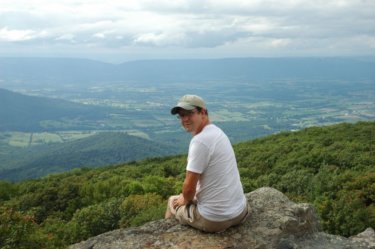
“Have you ever hit a pile of dog poop with a weed whacker?” Take it from Preserve Manager Sean Quinn, who says, “It’s the best way to turn a nice day into a horrible one.”
Preserve manager Sean Quinn answered some common questions about Natural Lands’ properties:
Q: What is the rationale for Natural Lands’ preserve etiquette and rules for visitors?
A: Natural Lands advocates a philosophy developed by The Leave No Trace Center for Outdoor Ethics, a nonprofit that protects the outdoors by teaching and inspiring people to enjoy it responsibly. Simply put, “take only pictures and leave only footprints.” The philosophy is based on seven principles for recreating in the outdoors responsibly:
- Plan ahead and prepare.
Check our website for the latest updates on conditions, trail or facility closures, parking availability, or possible events. Consider planning your visit for early in the day when the preserves are less busy, and always be prepared for the weather. - Travel on durable surfaces.
Simply put, stay on the trails. (That means your dogs, too!) We have miles of trails laid out for you to enjoy! These pathways were created with a lot of careful planning, and our staff work diligently to maintain them year round. Staying on trails minimizes erosion, protects wildlife habitat, and reduces the chance of visitors getting ticks. -
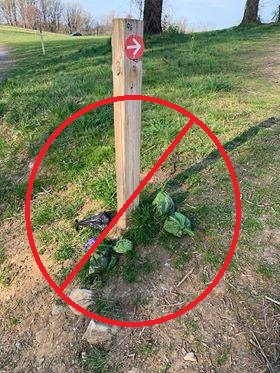
C’mon. This is gross. Pack out what you pack in (or what your dog packs in!).
Dispose of waste properly.
Pack in, pack out. Be prepared to take all of your trash with you, including bagged dog waste. Some of our preserves have trash cans or dog “poop bag stations,” but many do not. What’s more, some trash cans have been removed during the COVID-19 pandemic to reduce transmission of the virus. - Leave what you find.
First and foremost, our preserves are sanctuaries for plants and animals. But we believe strongly in sharing these beautiful places with visitors, which is why open our properties to the public, free of charge. Leave the turtle where you find it. It is happier here than in your home (and it’s illegal to remove wildlife). Don’t pick the flowers. Pollinators, like bees and butterflies, need them and, in many cases, we have spent money and staff hours to encourage their growth. Leave the rocks, feathers, and pinecones where they lay. Feel free to pick up trash… that is the only exception to this rule. - Minimize campfire impacts.
Camping, picnicking, and fires of any kind are prohibited on all of Natural Lands’ nature preserves. - Respect wildlife.
Observe wildlife from a distance, don’t feed animals, and don’t destroy their habitat. While it might be fun to catch a frog or crayfish in the stream, but be gentle and return the animal exactly where you found it. It’s amazing how many organisms live under a rock in a stream. By disturbing even the rock you disturb the critters. - Be considerate of other visitors.
Folks use our preserves for many reasons: for exercise, to spend time with family, or as a refuge of peace and quiet. Whatever your reason is, it is important to think of others too. Yield to others on the trails. Keep your dogs leashed at all times. Pick up your dog poop—no one wants to step in that!
Q: Are the preserves public land? My taxes pay your salary, right?
A: All of our preserves and our public garden are private property owned by Natural Lands, not by any township, county, or other entity. Our staff are not paid using any tax funds. Yes, we open our land to the public but it is not public property. We are funded through the support of members of Natural Lands. (Not a member yet? What are you waiting for?)
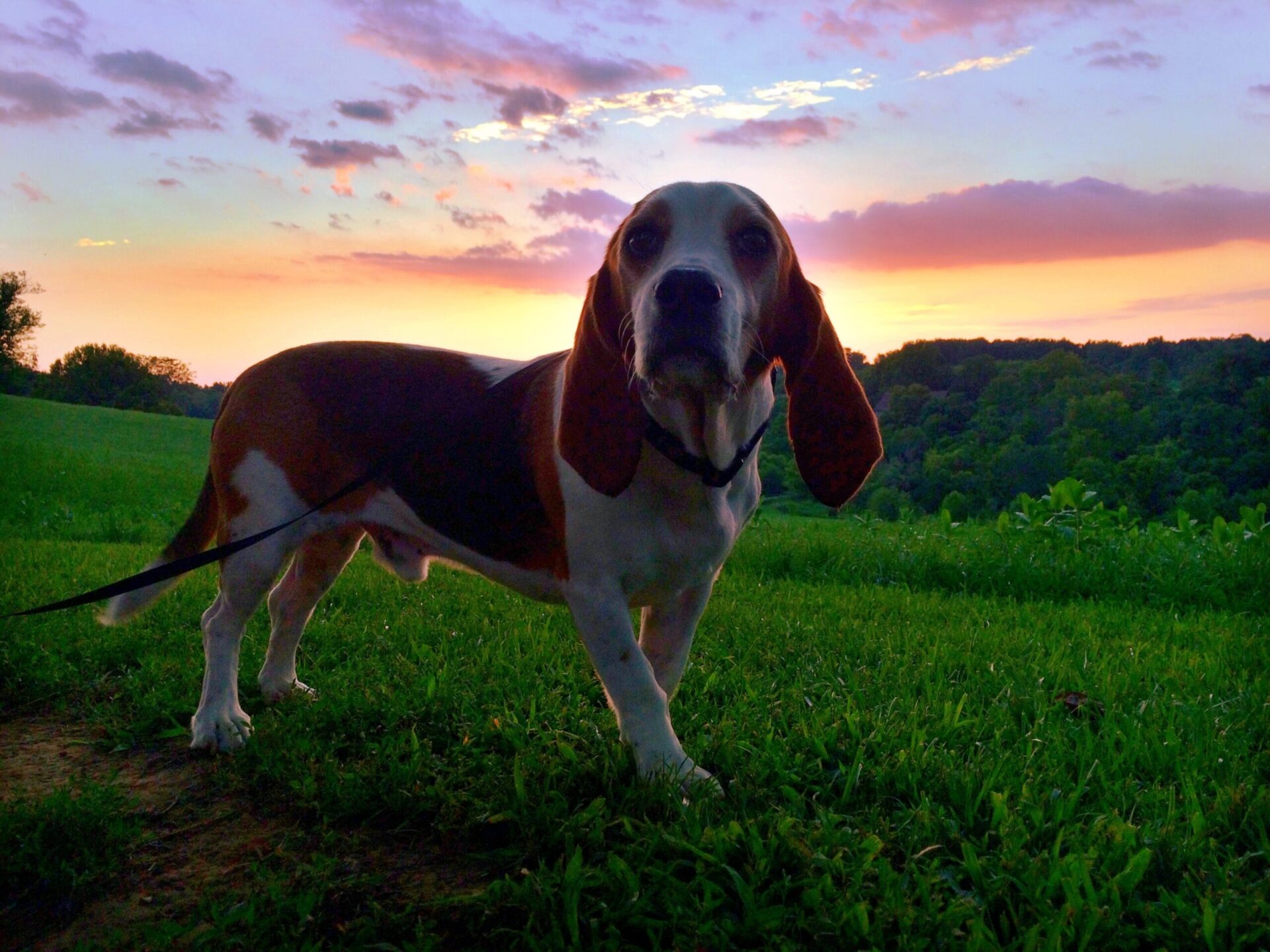
Elmer says, “I prefer to be on a leash and follow the rules. I don’t want us to be banned from visiting these awesome preserves!”
Q: Why does my dog need to be on a leash?
A: Where do I begin! Our preserves were set aside to provide a safe habitat for plants and animals. Off-leash dogs seriously disrupt sensitive habitats. Not all birds make their nests in trees. Many nest right on the ground in the grass. The same place that ticks and chiggers call home. Dogs can trample nests, crush eggs, and discourage birds from ever returning, plus I doubt you want your dog bring home all of those blood sucking hitch hikers. Also, not everyone likes dogs, yes even your dog. An off-leash dog can trigger fear in many people. Remember Leave No Trace principal #7, Be Considerate of Others. Lastly, our preserves are private property and we expect folks to follow the few rules we lay out. A dog owner who does not abide by our leash rules is considered in violation and will be asked to leave.
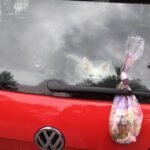
Here’s a handy trick for packing out that smelly dog poo. Remember to take all your trash home with you and dispose of it properly.
Q: Speaking of dogs, I noticed some preserves provide biodegradable dog poop bags. Why can’t I just bag the poo and leave it on the ground? It will go away, right?
A: Not exactly. Many of our preserves spend a lot of money annually to provide free dog poop bags to our visitors. We chose BioBags because they are made from corn and not petroleum. Corn is a renewable resource, while petroleum is not. It still takes many years for the corn-based bags to degrade. Used dog bags are considered litter and should be placed in a trash can or taken with you.
So why bother even bagging it? Not only does dog waste have the opposite effect of fertilizer, it promotes non-native plants to grow where it lays. Also, have you ever hit a pile of dog poop with a weed whacker? Well, ask anyone on our stewardship staff how quickly a nice day can turn horrible.
Q: What about apple cores, banana, peels, or orange peels. They are natural. Is it OK to toss them on the ground?
A: Nope. Just like the dog poop bags, fruit skins take years to degrade and look terrible littering our beautiful properties. Fruit skins are trash and need to be packed out just like all other trash. This brings me to “micro-trash”. Micro-trash are little pieces of trash like cigarette butts, the tiny piece of wrapper that always tears off from your granola bar, or the little wrapper your gum came in. Trash is trash, no matter how small. Be mindful to make sure all litter is picked up from the ground.
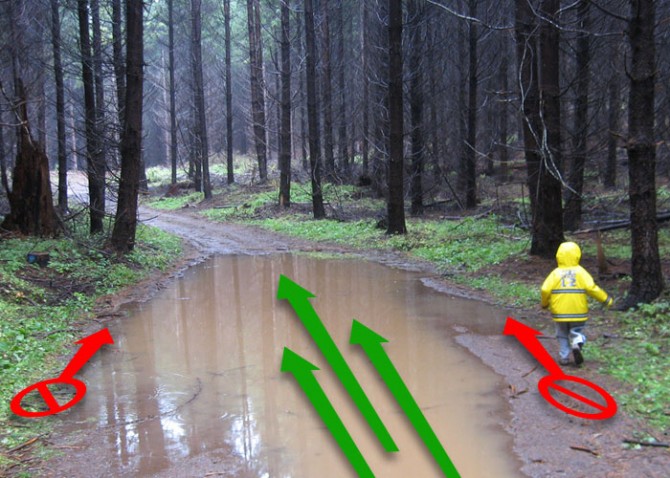
Plan ahead and wear waterproof boots rather than walking around the edges of puddles.
Q: The trails are really muddy; is it OK to go around the mud puddles?
A: As tempting as it is to keep your feet dry, going around a puddle just exacerbates the problem of a muddy trail. Continued travel around a wet area widens the puddle making it difficult for the area to ever dry out. Preserve staff then have a much bigger problem to deal with. Most preserves only have one employee who must tackle every task needed to keep the preserve up and running. Trail rehabilitation is very time consuming and takes away from other important tasks. Recall Leave No Trace Rule 1; Plan ahead and prepare. You are hiking in a natural area and mud happens. Wear appropriate footwear and embrace the feeling of mud squish under your feet.
Q: Are mountain bikes allowed?
A: No, our trails are all designed for hiking only. The International Mountain Bike Association designs and builds trails meant to stand up to the impact bikes create, and our trails are not designed for this purpose. Chances are, there is a park near you that has approved mountain biking trails. Check here to find one.
By following Natural Lands’ visitation rules and adopting Leave No Trace principles, we can help protect and enjoy the natural world together. Thank you!
next post
Pocopson/West Bradford Farm Preserved Forever
April 8, 2020
Natural Lands announced today the successful preservation of the 54-acre Castle Rock Farm that straddles Pocopson and West Bradford Townships, Chester County.
